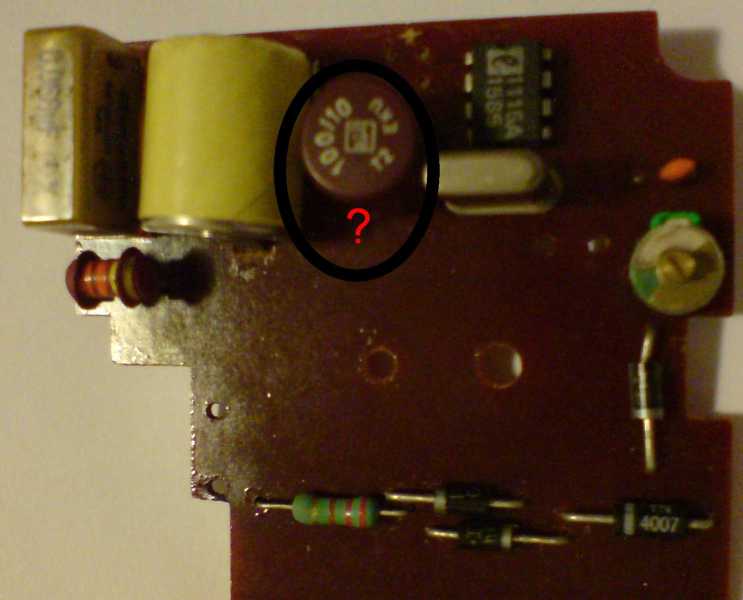This quartz clock is increasingly slowing. The capacitors (one removed in picture), resistors and diodes tests OK. I'm suspecting the 4194.304 kHz quartz crystal, but don't have any tools to test it. The clock is about 20 years old, and the oscillation might be failing.
I'm wondering if anyone can identify the component I've ringed on the picture. There are no markings on the board.
I'll probably order a new crystal at DigiKey next time I've got something more to order. Does anyone know how much importance the Load Capacitance has on a crystal? I can't find a datasheet on the original ITT 1385 part.

Thanks for any help.
I'm wondering if anyone can identify the component I've ringed on the picture. There are no markings on the board.
I'll probably order a new crystal at DigiKey next time I've got something more to order. Does anyone know how much importance the Load Capacitance has on a crystal? I can't find a datasheet on the original ITT 1385 part.
Thanks for any help.



Comment